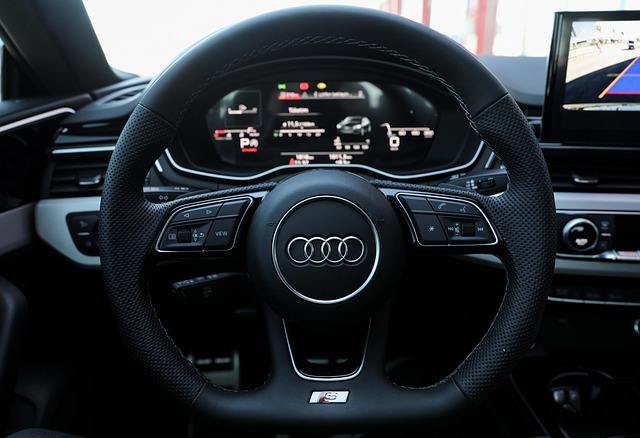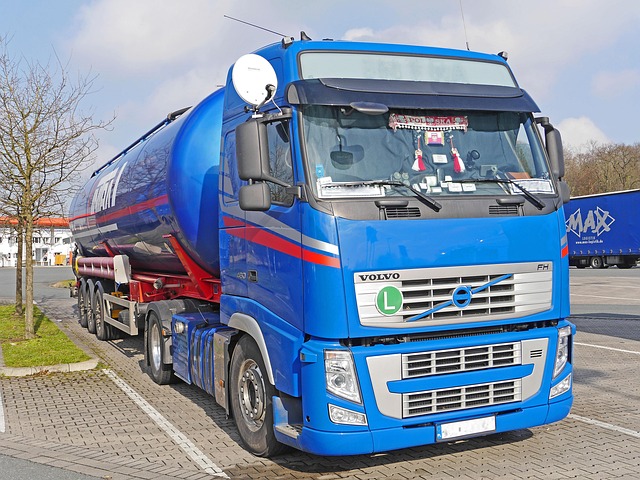Registering a car in California is a straightforward process that requires understanding specific requirements and gathering essential documents. As a California resident, it’s crucial to familiarize yourself with the state’s guidelines for vehicle registration through the Department of Motor Vehicles (DMV). This step-by-step guide covers everything from verifying your Vehicle Identification Number (VIN) to completing the application form and paying fees, ensuring you’re prepared to hit the road legally.
- Understand California Vehicle Registration Requirements
- Gather Necessary Documents for Car Registration
- Visit a California Department of Motor Vehicles (DMV) Office
- Complete the Vehicle Registration Application Form
- Pay the Required Registration Fees and Get Your License Plate
Understand California Vehicle Registration Requirements

Before registering your car in California, it’s crucial to understand the state’s specific requirements for vehicle registration. This process involves several steps and documents, ensuring that all vehicles on California roads meet safety and environmental standards. One essential component of this process is a Vehicle Identification Number (VIN) verification, which serves as a unique identifier for every car.
In California, a VIN inspection is typically conducted to confirm the authenticity of the vehicle and its components. This can be done through various methods, including utilizing a mobile VIN verifier, which allows for convenient and efficient checking of a car’s history and specifications. By ensuring that your vehicle passes this inspection, you contribute to maintaining a transparent and safe automotive landscape in the Golden State.
Gather Necessary Documents for Car Registration

Before you begin the registration process, ensure you have all the essential documents ready. The California Department of Motor Vehicles (DMV) requires specific paperwork to verify ownership and identify your vehicle accurately. One crucial document is the Vehicle Identification Number (VIN) verifier, which can be obtained through a mobile VIN inspection or by visiting an authorized location. This unique 17-character code is a key component in identifying your car’s make, model, year, and other important specifications.
Additionally, you’ll need proof of ownership, typically a title document, and valid identification like a driver’s license. If the vehicle has a lien on it, you may require documentation from the lender as well. It’s advisable to check with the DMV for the complete list of requirements, as they can assist in ensuring your car registration process is smooth and efficient, especially when considering options for a mobile VIN inspection or verification service.
Visit a California Department of Motor Vehicles (DMV) Office

To begin the registration process for your vehicle in California, start by visiting a local California Department of Motor Vehicles (DMV) office. These offices are equipped to handle all the necessary paperwork and requirements for registering your car. Upon arrival, locate the specific counter or section dedicated to vehicle registration. A DMV representative will guide you through the steps, which include verifying your Vehicle Identification Number (VIN). This critical process ensures the accuracy of your vehicle’s information on record, facilitating a smooth registration experience.
Consider opting for a mobile VIN inspection or verification service if you prefer a more convenient approach. These services send a specialist to your location to perform the VIN check, saving you the time and effort of visiting a DMV office. This option is especially beneficial if you have multiple vehicles to register or face challenges in accessing a local DMV.
Complete the Vehicle Registration Application Form

To begin the registration process in California, you’ll need to complete and submit the Vehicle Registration Application Form (Form DV304). This form is your key to legally operating your vehicle within the state’s boundaries. Make sure you have all the required information before getting started. The form requires details such as your personal information, vehicle specifications, and the current odometer reading—all of which can be obtained from your vehicle’s registration documents or by conducting a mobile vin verification using your car’s unique 17-digit Vehicle Identification Number (VIN).
When filling out this crucial document, double-check the accuracy of your data to avoid any delays. The form includes sections for both you as the owner and a designated agent (if applicable), ensuring a transparent process. Once completed, submit the form along with necessary fees to the California Department of Motor Vehicles (DMV) to officially register your vehicle and obtain the required stickers and plates. Remember, a valid VIN inspection is essential, especially when conducting a mobile vin verification to streamline the registration experience.
Pay the Required Registration Fees and Get Your License Plate

After completing your vehicle’s registration application and providing all necessary documents, it’s time to pay the required fees. California has specific charges for car registration, which vary based on factors like vehicle type, age, and emission standards. You can usually pay online or at a local DMV office using a debit or credit card. Ensure you have your Vehicle Identification Number (VIN) readily available during this process as it’s crucial for accurate fee calculation and verification.
Once the payment is processed, you’ll receive your license plate and registration documents in the mail. If you prefer a quicker turn-around time, consider opting for faster mailing services or even mobile VIN verification/inspection services that can expedite the process. These options are especially beneficial if you’re in a hurry to get your vehicle registered and on the road as soon as possible.
Registering your car in California is a straightforward process that ensures your vehicle complies with state regulations. By understanding the requirements, gathering essential documents like a valid title and VIN verifier, visiting a local DMV office, and completing the registration application, you’ll have your vehicle registered and on the road in no time. Don’t forget to pay the necessary fees and obtain your license plate for official recognition on California’s roads.
